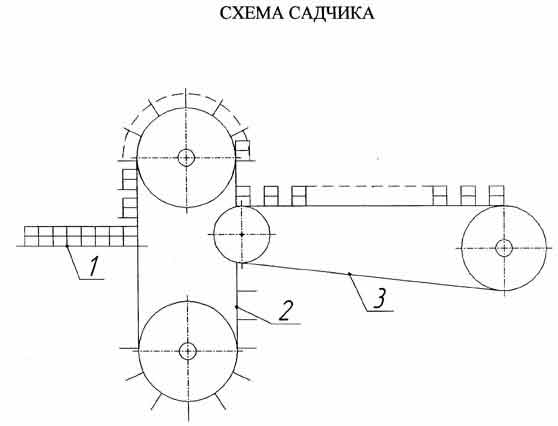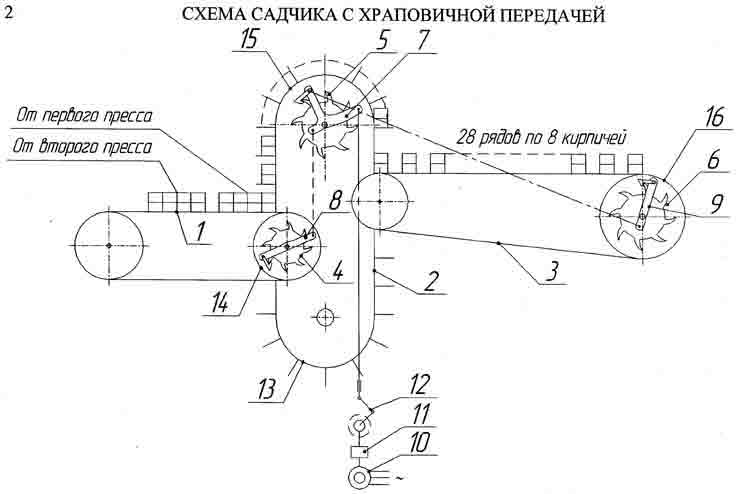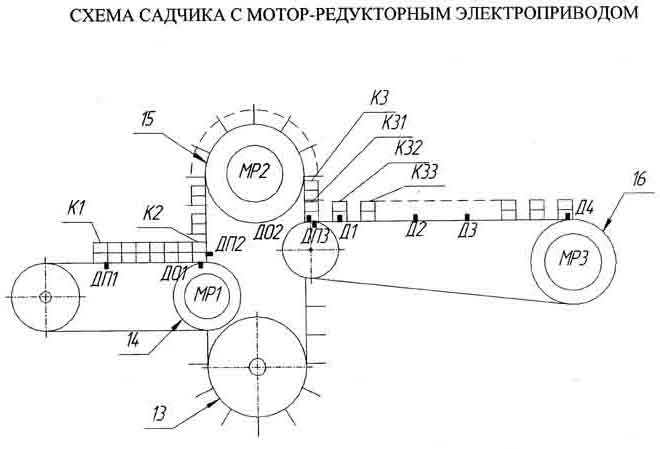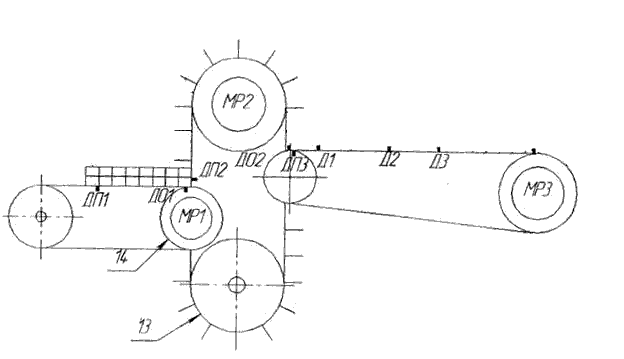 Nokia881@gmail.com
Nokia881@gmail.comAL-DESET JAMAL
Faculty: Electrotechnical
Speciality: Electromechanical Systems Of Automomation and electrie drive
Leader of work: Chepak Anatoliy Alekseevich.
Theme of master's work:
Электропривод накопительного конвейера с пошаговым режимом работы в условиях производства керамического кирпича.
Materials on the theme of master's work: Biography \ Links \ Report about the search. Individual task \ Individual task2
The composition process line factory for the production of ceramic bricks-sadchik mechanism is designed for special
stowage
(cages) molded wet bricks for the mobile platform for further drying and
roasting in heating furnaces.
Construction sadchika schematically shown on the sheet 1

The mechanism consists of 1 pitcher and a savings of chain conveyors 3, as well as chain elevator 2.
Sadchik works in stepper mode. Moving the chain conveyor 1 being consistent
jumps (steps), a length equal to the width of one
brick. As a result of displacement on a two-step series of eight pieces of bricks fills one cassette fixed elevator, located on the same
level as the pitcher conveyor. Then elevators and moving cassette moves up one step, equal to the distance between the cluster.
Place filled cassettes has raised another, moving from the bottom, which is then filled with a number of other bricks. Filling elevator
lasts until the front (on the fly), a number of bricks will not reach the surface of accumulating conveyor. Latest starting immediately,
picking bricks from these tapes and move them one step. Length step bolyshe than the pitcher conveyor, through increased speed
circuits in step. With a width brick 125 mm gap between adjacent rows of bricks are 105 mm. When accumulating conveyor filled
with bricks, sadchik stopped. By accumulating conveyor brought manipulator with eight rows of movable cheeks to catch bricks,
lifting and stacking them on the stove platform with all the technological gap required for the free passage between the bricks heated
gases during drying and firing. Sadchik resumes work after accumulating full discharge conveyor.
Statistics notes frequent downtime process line due to a work sadchika. The main
cause of the problem is the use of the drive
sadchika hrapovichno-linkage (sheet 2) with the inherent unreliability of it, and adjusting its complex and labour. Hence the task of
replacing this transmission alternative drive, which did not contain a hrapovichnyh devices.
Review and analysis of literature relating to electric power parts and funds
management, showed that sadchika options are:
-- Effective with hrapovichnoy electric transmission and a driving electric
motor;
Mnogodvigatelny-electric drive motor-gear and managed application start-brake
regimes themselves drive motors;
Mnogodvigatelny-electric drive motor-ie, to be administered through
electromagnetic coupling with the constant speed motors.
Kinematic sadchika scheme with the existing drive system is shown on the sheet
2.

The drive is equipped with an asynchronous motor 10 short working with the same speed. Through reducer 11, the movement is
transmitted from the engine crank-transfer shatunnoy 12, which abut cravings associated with a leash 7, fitted with a dog, which is in
contact with teeth Ratchet 5, elevator. Thrust is moving back and steadily, causing swinging a leash around a rotation axis Ratchet
5. Each time this sways cor turns one step. Since hrapovih rigidly connected with a chain leading star of 15 elevators, cassettes last captured along with bricks also move one step.
Similarly operate ratchets 4 and 6 pitcher and accumulating conveyor associated
with a ratchet traction 5.
Dignity hrapovichnoy transfer is that, by the same distance between the teeth
hrapovyh wheels remain the same gaps between bricks
on the entire length of conveyors. Thanks to this manipulator, which includes his brush in the intervals between the bricks accumulating conveyor, not destroying them.
Con: due to frequent fractures hrapovichnogo mechanism refusals have
occurred in the sadchika, downtime process line. As a
result, the plant nedodaet to half of the production.
In the electric motor-reduktornom each business entity sadchika fitted
with a separate asynchronous short-engine together with the gearbox in one case.
The scheme sadchika with such drive is shown on the sheet 3, which MP1, MP2, MP3
motor-reducers
respectively pitcher conveyor elevator and accumulating conveyor.
It was initially estimated to implement step by the regime sadchika
alternation of setting and unsetting engine motor-reducer
with a periodicity of 3.3, adopted in hrapovichnoy transfer. Checking the status of the thermal engine showed that the frequency of
that happening in pergrev electric cars caused by high starting currents in the length of putting up to 15% of electric one step. Heat
eliminated only in the event of an increase in the length of the cycle until the regime stepper with 10.5 and above. However, in this case, reduced productivity sadchika to 3.7 times or more.

In order to prevent overheating in the stepper motors sadchika mode, it
is proposed to install on the output shaft of motor-
gearbox intermediate electromagnetic friction coupling, connected with the driving and 16 stars 14.15 mechanism (see sheet 3). Here
motors rotate with the same speed and the drive to rotate the star enough to include coupling to feed its winding vozbuzheniya DC.
Stopping star samovybegomposle disconnect couplings occur.

The advantages of this drive are the exception to the influence of the moment of inertia of the engine on the formation of the working
bodies of stepper treatment mechanism and high reliability power parts and nedotatkom - way of the free angular dependence of the
number of bricks in gaps between bricks conveyor become uneven, so cheeks manipulator dropped partly on clearance and partly
on bricks, destroying the past. However, since this type of drive is the most appropriate for sadchika, it could be adopted for
implementation upon finalization.